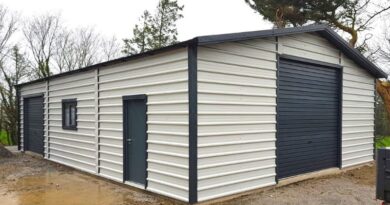Value-Add Real Estate Investing: How It Offers Outstanding and Substantial Tax Advantages
Value-add real estate investing is a popular strategy for private non-institutional investors. It can offer outstanding returns and substantial tax advantages.
However, it’s essential to understand that this investment style has a higher risk. Success requires a high degree of discipline and market awareness.
Identifying the Right Property
Choosing the right property for value-add real estate investing is an essential step in the process. Investors want to look for properties with the potential for higher income from capital improvements or operational efficiencies.
These improvements include adding amenities, implementing better management or reducing operating expenses. These improvements can drastically increase the property’s NOI.
Investors should consider whether the property is in a good location and has strong demand when looking for value-add commercial properties. It is also essential to check for deferred maintenance and vacancy rates.
Ultimately, the right property for value-add investment requires an experienced, well-capitalized investor like Peter Hungerford founder of PH Realty Capital, who understands how to execute a successful real estate strategy. A value-add strategy provides a moderate risk-to-high return approach for CRE investors who seek stable income and appreciation.
Identifying the Right Vendor
In the world of value-add investing, a property is defined as one that needs significant improvements to generate attractive rates of return. The upgrades can be operational (cost-cutting) or physical (a new roof).
These properties are ideal for investors with the tenacity to take on significant work and who reasonably expect to see a return on their investment within a few years. The key is identifying a vendor with the resources and expertise to perform these improvements as quickly and cost-effectively as possible.
These vendors are typically wholesalers with access to an extensive network of sellers and brokers in your target market. They can also help you find foreclosures, short sales, bank-owned properties and auctioned homes that fit your value-add strategy.
Identifying the Right Strategy
Value-add real estate investing can be an exciting strategy for CRE investors looking for stable income and capital appreciation. However, it requires discipline, market knowledge and the ability to execute business plans.
Investors in this strategy seek to increase NOI, or net operating income, by raising a property’s revenue stream (rent) through operational and capital improvements that can reduce expenses. These strategies can include property renovations, management restructuring or marketing efforts.
Generally, value-add real estate investors are looking for properties that have cash flow but need an improvement to attract new tenants and improve retention. These efforts can be accomplished by increasing rent or lowering costs through lower maintenance and administrative expenses.
Ultimately, value-add properties have the potential for significant increases in NOI and capital appreciation over time. However, the strategy carries more risk than core or core plus investments.
Identifying the Right Execution Plan
A value-add strategy requires investing significant money into the property and making necessary renovations. These upgrades can increase rents, increase ROI, and improve the property’s profitability.
However, this type of investment comes with more risk than core investments since the property may be under-leased, rented at below-market rates or have deferred maintenance.
Fortunately, some strategies can help mitigate these risks. These strategies can reduce costs, improve management and increase tenants’ satisfaction, raising NOI and cash flow.
These value-add strategies also require a strong business plan and disciplined execution. With this, you could find yourself able to increase your ROI.



